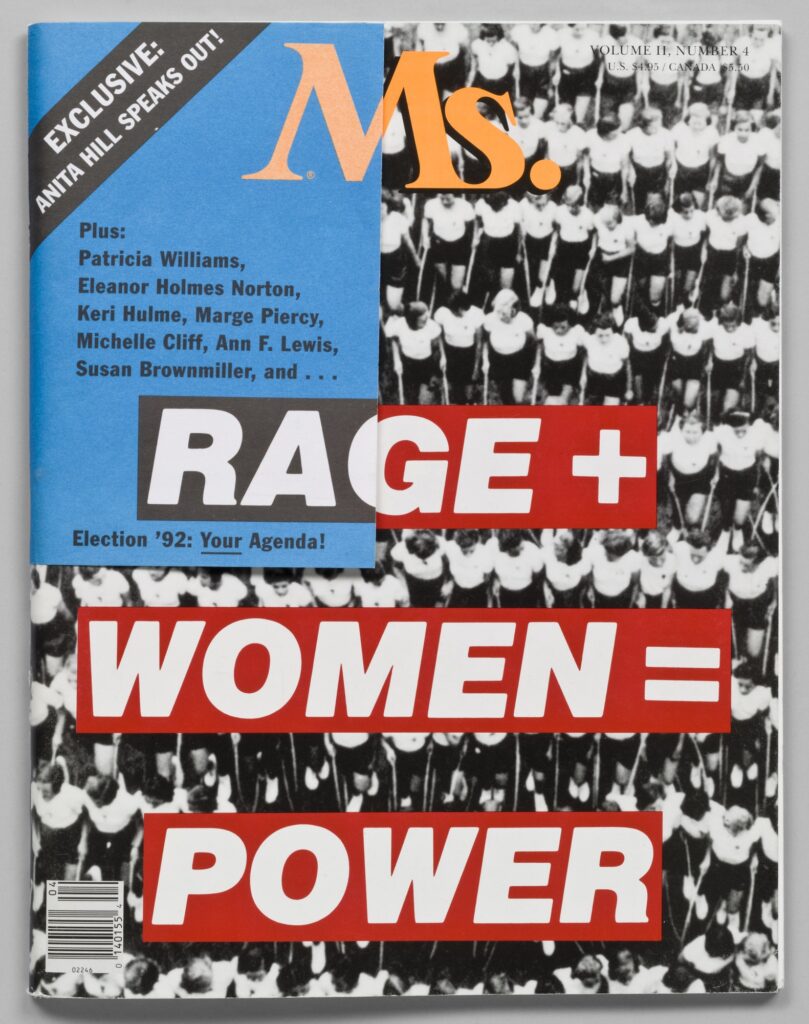
To pay tribute to five decades of reporting, rebelling and truth-telling, From the Vault includes some of our favorite feminist classics from the last 50 years of Ms. For more iconic, ground-breaking stories like this, order 50 YEARS OF Ms.: THE BEST OF THE PATHFINDING MAGAZINE THAT IGNITED A REVOLUTION (Alfred A. Knopf)—a stunning collection of the most audacious, norm-breaking coverage Ms. has published.

The response to my Senate Judiciary Committee testimony has been at once heartwarming and heart-wrenching. In learning that I am not alone in experiencing harassment, I am also learning that there are far too many women who have experienced a range of inexcusable and illegal activities—from sexist jokes to sexual assault—on the job.
My reaction has been to try to learn more. Perhaps the most compelling lesson is in the stories told by the women who have written to me. I want to share some of this with you. “The Nature of the Beast” describes the existence of sexual harassment, which is alive and well. A harmful, dangerous thing that can confront a woman at any time.
What we know about harassment, sizing up the beast:
Sexual harassment is pervasive.
- It occurs today at an alarming rate. Statistics show that anywhere from 42 to 90 percent of women will experience some form of harassment during their employed lives. But the statistics do not fully tell the story of the anguish of women who have been told in various ways on the first day of a job that sexual favors are expected. Or the story of women who were sexually assaulted by men with whom they continued to work.
- It has been occurring for years. In letters to me, women tell of incidents that occurred 50 years ago, incidents they have been unable to speak of for that entire period.
- Harassment crosses lines of race and class. In some ways, it is a creature that practices “equal opportunity” where women are concerned. In other ways it exhibits predictable prejudices and reflects stereotypical myths held by our society.

We know that harassment all too often goes unreported for a variety of reasons.
- Unwillingness (for good reason) to deal with the expected consequences;
- Self-blame;
- Threats or blackmail by coworkers or employers;
- What it boils down to in many cases is a sense of powerlessness that we experience in the workplace, and our acceptance of a certain level of inability to control our careers and professional destinies. This sense of powerlessness is particularly troubling when one observes the research that says individuals with graduate education experience more harassment than do person with less than a high school diploma. The message: when you try to obtain power through education, the beast harassment responds by striking more often and more vehemently.
That harassment is treated like a woman’s “dirty secret” is well-known. We also know what happens when we “tell.” We know that when harassment is reported the common reaction is disbelief—or worse.
- Women who “tell” lose their jobs. A typical response told of in the letters to me was: I not only lost my job for reporting harassment, but I was accused of stealing and charges were brought against me.
- Women who “tell” become emotionally wasted. One writer noted that “it was fully eight months after the suit was conducted that I began to see myself as alive again.”
- Women who “tell” are not always supported by other women. In my kind- est moments I believe that this reaction only represents attempts to distance ourselves from the pain of the harassment experience.

What we are learning about harassment requires recognizing this beast when we encounter it. We are learning painfully that simply having laws against harassment on the books is not enough. The law, as it was conceived, was to provide a shield of protection for us. Yet that shield is failing us: Many fear reporting, others feel it would do no good. The result is that less than 5 percent of women victims file claims of harassment.
Moreover, the law focuses on quid pro quo, but a recent New York Times article says that this makes up considerably less than 5 percent of the cases. The law needs to be more responsive to the reality of our experiences.
As we are learning, enforcing the law alone won’t terminate the problem. What we are seeking is equality of treatment in the workplace. Equality requires an expansion of our attitudes toward workers. Sexual harassment denies our treatment as equals and replaces it with treatment of women as objects of ego or power gratification.
Yet research suggests two troublesome responses exhibited by workers and by courts. Both respond by…
- Downplaying the seriousness of the behavior (seeing it as normal sexual attraction between people) or commenting on the sensitivity of the victim.
- Exaggerating the ease with which victims are expected to handle the behavior. But my letters tell me that unwanted advances do not cease—and that the message was power, not genuine interest.
We are learning that many women are angry. The reasons for the anger are various and perhaps all too obvious.
- We are angry because this awful thing called harassment exists in terribly harsh, ugly, demeaning, and even debilitating ways. Many believe it is criminal and should be punished as such. It is a form of violence against women as well as a form of economic coercion, and our experiences suggest that it won’t just go away.
- We are angry because for a brief moment we believed that if the law allowed for women to be hired in the workplace, and if we worked hard for our educations and on the job, equality would be achieved. Now we are realizing this is not true. The reality is that this powerful beast is used to perpetuate a sense of inequality, to keep women in their place notwithstanding our increasing presence in the workplace.
What we have yet to explore about harassment is vast. It is what will enable us to slay the beast. How do we capture our rage and turn it into positive energy? Through the power of women working together, whether it be in the political arena, or in the context of a lawsuit, or in community service. Making the workplace a safer, more productive place for ourselves and our daughters should be on the agenda for each of us.
Up Next:




